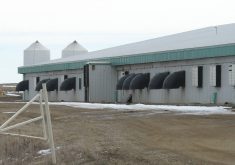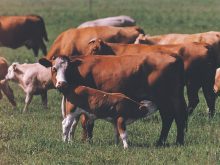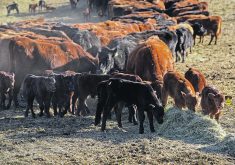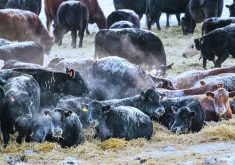Feedlot operators lose millions of dollars a year from rumen acidosis, a disease brought on by the intensive feeding practices used to fatten cattle. Though some operators think acidosis is a serious disease that causes rapid death, most cases are subclinical, silently eating away at profits.
The rumen, which is analogous to a large fermentation vat, works best when it is continuously supplied with forage. Rumen microbes have an active metabolism that converts this form of feed into nutrients that can be readily used. These micro-organisms don’t adjust easily to dietary changes, especially a shift to rations with too much carbohydrate and not enough forage.
Read Also
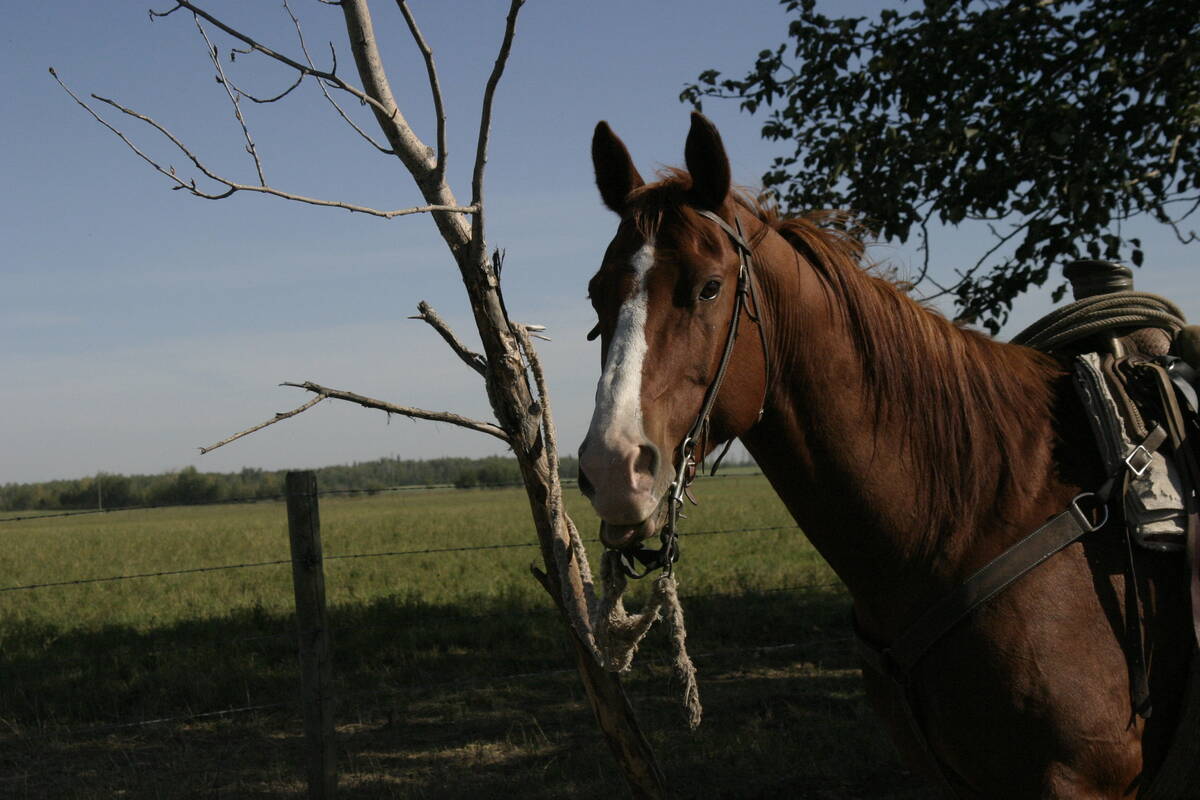
Horses challenged when asked to be weekend warriors
Horses are creatures of consistency. Their bodies and nervous systems are designed for steady, rhythmic movement, low-intensity grazing and regular social interaction.
Because rumen microbes rapidly digest the carbohydrates in grain, large amounts of lactic acid are released into the rumen. Ground feed is broken down faster than whole grain so acid production is even higher.
Lactic acid eats away at the rumen wall. As the surface becomes eroded, bacteria and moulds invade and cause infection. If these organisms burrow deeper, they enter blood vessels and migrate to the liver where they stimulate abscess formation.
The high quantities of lactic acid can also be absorbed into the blood stream, affecting the body’s pH level. When a sufficient quantity of acid is produced and absorbed, blood pH can drop, sending the animal into shock. Sometimes, these events happen so rapidly that an animal can die without exhibiting signs of illness.
In most cases, however, symptoms develop more slowly. The first sign is rapid breathing combined with a high heart rate. This can initially be confused with almost any infectious disease, but cattle with acidosis do not have fevers. As well, acidosis-affected animals often have a profuse watery diarrhea containing undigested feed.
As more lactic acid is absorbed, blindness can develop. Affected cattle stagger and bump into things. At this stage, lactic acidosis can be mistaken for polioencephalomalacia, or PEM, a disease also seen in feedlots. Left untreated, animals with severe acidosis eventually die.
Mild acidosis can be managed by switching animals to a high fibre diet. During the early stages, a drench may be sufficient to neutralize rumen acid.
Veterinarians at Oklahoma State University suggest the following recipe:
500 grams sodium bicarbonate (baking soda)
850 millilitres 12 percent formaldehyde
20 grams magnesium oxide
40 grams charcoal
These ingredients are mixed together with enough water to make a two litre solution, which is administered at a dose rate of 100 mL for each 45 kilograms of body weight. The calculated dose is further diluted in four L of water and given by drench.
Cattle in critical shape need intensive treatment, including intravenous fluids. Survivors often suffer from liver abscesses later in the feeding period.
Despite the dramatic effects of severe lactic acidosis, it is the cattle with no obvious symptoms that cause significant economic loss to producers. Acidotic animals may not eat or grow as well as unaffected animals. They can also develop liver abscesses, which can reduce daily gain by up to 11 percent and feed efficiency by nine percent.
Acidosis can be prevented. The first step is to avoid feeding over-processed grain. Any kind of processing makes grain easier to digest, which increases the rate of acid production and the chance of acidosis.
The second step is to ensure that cattle eat adequate amounts of roughage, which should be coarsely chopped to promote good rumen health through chewing and rumination. Chewing also stimulates saliva production, which contains bicarbonate, a natural buffer that neutralizes acid in the rumen.
Unfortunately, acidosis prevention programs run counter to the goal of maximizing weight gain through grain feeding. A balance must be struck between the level of grain needed to promote good gains and the amount that can be eaten without promoting acidosis.
Management tips for preventing subacute acidosis
- Feed mixed diets rather than feeding hay and grain separately.
- Feed slowly fermenting grain.
- Gradually adapt cattle to high-grain finishing diets.
- Always keep feed in the bunker so animals will eat continuously.
- Feed cattle on a regular schedule, two or more times a day.
- Use an ionophore to reduce variation in feed consumption.



